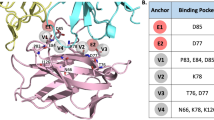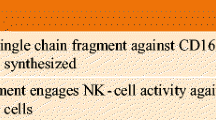Abstract
Natural killer (NK) cells are cytotoxic lymphocytes that play a major role in the innate immune system. NK cells exhibit potent cytotoxic activity against cancer cells and virally infected cells without antigen priming. These unique cytotoxic properties make NK cells a promising therapeutic against cancer. Limitations of NK cell therapy include deficiencies in high clinical efficacy often due to a need for a high NK cell to target cell ratio to achieve effective killing. In order to address the suboptimal efficacy of current adoptive NK cell therapy, a high throughput screen (HTS) was designed and performed to identify drug-like compounds that increase NK cytotoxic activity against tumor cells without affecting the normal cells. This screen was performed in a 384-well plate format utilizing an expanded primary NK cell product and ovarian cancer cells as a target cell (TC) line. Of the 8000 diverse small molecules screened, 16 hits were identified (0.2% hit rate) based on both a robust Z (RZ) score < -3 and a greater than 10% increase in NK cell killing. A validation screen had a confirmation rate of 70%. Select compounds were further validated and characterized by additional cytotoxicity assays including activity against multiple blood cancer and solid tumor cell lines, with no effect on primary human T cells. This work demonstrates that high-throughput screening can be reliably used to identify compounds that increase NK tumoricidal activity in vitro that can be further investigated and translated for potential clinical application. Précis: Our work led to the identification of promising compound that potently increases NK cell-mediated killing of a variety of different cancer cells, but no impact on the killing of normal cells. This compound demonstrates the utility of this assay.




Similar content being viewed by others

Availability of data and material
The datasets generated during and/or analyzed during the current study are available on PubChem.
References
Stojanovic A, Correia MP, Cerwenka A (2013) Shaping of NK cell responses by the tumor microenvironment. Cancer Microenviron 6(2):135–146. https://doi.org/10.1007/s12307-012-0125-8
A. S. Chretien et al. 2017 NKp46 expression on NK cells as a prognostic and predictive biomarker for response to allo-SCT in patients with AML. Oncoimmunology. https://doi.org/10.1080/2162402X.2017.1307491.
Vitale M, Cantoni C, Pietra G, Mingari MC, Moretta L (2014) Effect of tumor cells and tumor microenvironment on NK-cell function. Eur J Immunol 44(6):1582–1592. https://doi.org/10.1002/eji.201344272
Dotiwala F et al (2016) Killer lymphocytes use granulysin, perforin and granzymes to kill intracellular parasites. Nat Med 22(2):210–216. https://doi.org/10.1038/nm.4023
Garg TK et al (2012) Highly activated and expanded natural killer cells for multiple myeloma immunotherapy. Haematologica 97(9):1348–1356. https://doi.org/10.3324/haematol.2011.056747
Liu E et al (2020) Use of CAR-transduced natural killer cells in CD19-positive lymphoid tumors. N Engl J Med 382(6):545–553. https://doi.org/10.1056/nejmoa1910607
Mastaglio S et al (2018) Natural killer receptor ligand expression on acute myeloid leukemia impacts survival and relapse after chemotherapy. Blood Adv 2(4):335–346. https://doi.org/10.1182/bloodadvances.2017015230
Plonquet A et al (2007) Peripheral blood natural killer cell count is associated with clinical outcome in patients with aaIPI 2–3 diffuse large B-cell lymphoma. Ann Oncol 18(7):1209–1215. https://doi.org/10.1093/annonc/mdm110
YXT Nadia Guerra, NT Joncker, FG, Augustine Choy, and DH Na Xiong, Susan Knoblaugh, Dragana Cado, Norman R Greenberg, and Raulet 2008 NKG2D-deficient mice are defective in tumor surveillance in models of spontaneous malignancy. Immunity 28(4): 571–580. https://doi.org/10.1016/j.immuni.2008.02.016.NKG2D-deficient.
Klapdor R et al (2017) Improved killing of ovarian cancer stem cells by combining a novel chimeric antigen receptor-based immunotherapy and chemotherapy. Hum Gene Ther 28(10):886–896. https://doi.org/10.1089/hum.2017.168
Garcia-Iglesias T et al (2009) Low NKp30, NKp46 and NKG2D expression and reduced cytotoxic activity on NK cells in cervical cancer and precursor lesions. BMC Cancer 9:1–8. https://doi.org/10.1186/1471-2407-9-186
L. Ruggeri et al.2002 Effectiveness of donor natural killer cell aloreactivity in mismatched hematopoietic transplants. Science 295(5562): 2097–2100. https://doi.org/10.1126/science.1068440.
Miller JS et al (2005) Successful adoptive transfer and in vivo expansion of human haploidentical NK cells in patients with cancer. Blood 105(8):3051–3057. https://doi.org/10.1182/blood-2004-07-2974
Siegel RL, Miller KD, Jemal A (2020) Cancer statistics, 2020. CA Cancer J Clin 70(1):7–30. https://doi.org/10.3322/caac.21590
Nham T et al (2018) Ex vivo-expanded NK cells from blood and ascites of ovarian cancer patients are cytotoxic against autologous primary ovarian cancer cells. Cancer Immunol Immunother 67(4):575–587. https://doi.org/10.1007/s00262-017-2112-x
Geller MA et al (2011) A phase II study of allogeneic natural killer cell therapy to treat patients with recurrent ovarian and breast cancer. Cytotherapy 13(1):98–107. https://doi.org/10.3109/14653249.2010.515582
C. J. Denman et al. 2012 Membrane-bound IL-21 promotes sustained Ex Vivo proliferation of human natural killer cells. PLoS One. https://doi.org/10.1371/journal.pone.0030264.
Ojo EO et al (2019) Membrane bound IL-21 based NK cell feeder cells drive robust expansion and metabolic activation of NK cells. Sci Rep 9(1):1–12. https://doi.org/10.1038/s41598-019-51287-6
Pinette A et al (2019) An IL-15-based super agonist ALT-803 enhances the NK cell response to cetuximab-treated squamous cell carcinoma of the head and neck. Cancer Immnuol Immunother 68(8):1379–1389. https://doi.org/10.1007/s00262-019-02372-2.An
Kerr WG, Chishol JD (2019) The next generation of immunotherapy for cancer: Small molecules could name big waves. J Immunol 202(1):11–19. https://doi.org/10.4049/jimmunol.1800991.the
h. sun and c. sun 2019 the rise of nk cell checkpoints as promising therapeutic targets in cancer immunotherapy. Front. Immunol 10: 1–14.
Otegbeye F et al (2018) Inhibiting TGF-beta signaling preserves the function of highly activated, in vitro expanded natural killer cells in AML and colon cancer models. PLoS ONE 13(1):1–13. https://doi.org/10.1371/journal.pone.0191358
Salih J et al (2010) The BCR/ABL-inhibitors Imatinib, nilotinib and dasatinib differentially affect NK cell reactivity. Int J Cancer 127(9):2119–2128. https://doi.org/10.1002/ijc.25233
Parameswaran R et al (2016) Repression of GSK3 restores NK cell cytotoxicity in AML patients. Nat Commun 7:1–11. https://doi.org/10.1038/ncomms11154
Pereira DA, Williams JA (2007) Origin and evolution of high throughput screening. Br J Pharmacol 152(1):53–61. https://doi.org/10.1038/sj.bjp.0707373
Xu Z et al (2020) A high-throughput assay for screening natural products that boost NK cell-mediated killing of cancer cells. Pharm Biol 58(1):357–366. https://doi.org/10.1080/13880209.2020.1748661
Zhijin Wu, Liu D, Sui Y (2008) Quantitative assessment of hit detection and confirmation in single and duplicate high-throughput screenings. J Biomol Screen 13(2):159–167. https://doi.org/10.1177/1087057107312628
Tang X et al (2018) Erratum: First-in-man clinical trial of CAR NK-92 cells: safety test of CD33-CAR NK-92 cells in patients with relapsed and refractory acute myeloid leukemia. Am J Cancer Res 8(9):1899
Jang YY et al (2012) An improved flow cytometry-based natural killer cytotoxicity assay involving calcein AM staining of effector cells. Ann Clin Lab Sci 42(1):42–49
An WF, Tolliday N (2010) Cell-based assays for high-throughput screening. Mol Biotechnol 45(2):180–186. https://doi.org/10.1007/s12033-010-9251-z
B. Chen et al., “Small molecule-mediated in Tissue Regeneration and Cancer,” vol. 5, no. 2, pp. 100–107, 2009. https://doi.org/10.1038/nchembio.137.Small.
Lichtenegger FS, Lorenz R, Gellhaus K, Hiddemann W, Beck B, Subklewe M (2014) Impaired NK cells and increased T regulatory cell numbers during cytotoxic maintenance therapy in AML. Leuk Res 38(8):964–969. https://doi.org/10.1016/j.leukres.2014.05.014
JP Veluchamy, N Kok, HJ van der Vliet, HMW Verheul, TD de Gruijl, and J Spanholtz 2017 The rise of allogeneic Natural killer cells as a platform for cancer immunotherapy: recent innovations and future developments. Front. Immunol. https://doi.org/10.3389/fimmu.2017.00631.
Shaffer BC et al (2016) Phase II study of haploidentical natural killer cell infusion for treatment of relapsed or persistent myeloid malignancies following allogeneic hematopoietic cell transplantation. Biol Blood Marrow Transplant 22(4):705–709. https://doi.org/10.1016/j.bbmt.2015.12.028
Iliopoulou EG et al (2010) A phase i trial of adoptive transfer of allogeneic natural killer cells in patients with advanced non-small cell lung cancer. Cancer Immunol Immunother 59(12):1781–1789. https://doi.org/10.1007/s00262-010-0904-3
Bachanova V et al (2010) Allogeneic natural killer cells for refractory lymphoma. Cancer Immunol Immunother 59(11):1739–1744. https://doi.org/10.1007/s00262-010-0896-z
Chen EW, Brzostek J, Gascoigne NRJ, Rybakin V (2018) Development of a screening strategy for new modulators of T cell receptor signaling and T cell activation. Sci Rep 8(1):2–10. https://doi.org/10.1038/s41598-018-28106-5
Gong C et al (2015) A high-throughput assay for screening of natural products that enhanced tumoricidal activity of NK cells. Biol Proced Online 17(1):6–13. https://doi.org/10.1186/s12575-015-0026-6
Murray J et al (2014) c-Abl modulates tumor cell sensitivity to antibody-dependent cellular cytotoxicity (ADCC). Cancer Immunol Res 2(12):1186–1198. https://doi.org/10.1158/2326-6066.CIR-14-0083.c-Abl
Acknowledgements
This research was supported by the following Case Comprehensive Cancer Center Shared Resources: Small Molecule Drug Development, Hematopoietic Biorepository and Cellular Therapy and Cytometry & Imaging Microscopy Shared Resource of the Case Comprehensive Cancer Center (P30CA043703). This work was also in part supported by an NIH-sponsored S10 grant (1S10OD018005-01 to B.A.P.) for the IN Cell Analyzer 6000 and R01CA259011. We thank Yong Han for performing LC/MS and HPLC analysis of compound 2.
Funding
P30CA043703, 1S10OD018005-01, R01CA259011. National Cancer Institute (US), P30CA043703,National Institutes of Health (US),1S10OD018005-01,Bruce Posner, National Cancer Institute,R01CA259011,David Wald
Author information
Authors and Affiliations
Contributions
G.L., K.M., H.W. and D.W. wrote and/or edited the manuscript. D.W., G.L., S.K., Y.F., and B.P. designed experiments. G.L., S.K., and H.N. performed the screening. D.W., Y.F., B.P., G.L., S.K., and H.C. analyzed the data. S.M. and Z.J. assisted with experiments.
Corresponding author
Ethics declarations
Conflicts of interest
The authors have no conflicts of interest to declare that are relevant to the content of this article.
Additional information
Publisher's Note
Springer Nature remains neutral with regard to jurisdictional claims in published maps and institutional affiliations.
Supplementary Information
Below is the link to the electronic supplementary material.
Rights and permissions
About this article
Cite this article
Lee, G., Karunanithi, S., Posner, B. et al. Chemical screening identifies novel small molecule activators of natural killer cell cytotoxicity against cancer cells. Cancer Immunol Immunother 71, 1671–1680 (2022). https://doi.org/10.1007/s00262-021-03117-w
Received:
Accepted:
Published:
Issue Date:
DOI: https://doi.org/10.1007/s00262-021-03117-w



